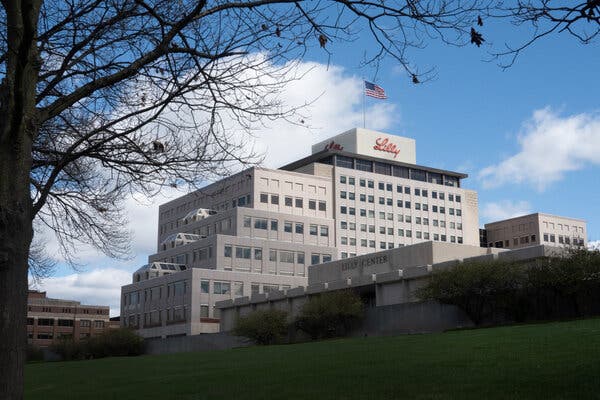Science
Eli Lilly Achieves $1 Trillion Market Value, Leading Healthcare Sector

Eli Lilly has officially reached a market capitalization of $1 trillion, marking a significant milestone as the first publicly traded company in the healthcare sector to achieve this level. The surge in Eli Lilly’s stock price is largely attributed to the company’s successful entry into the lucrative market for weight loss medications, specifically the class of drugs known as GLP-1s. Among its offerings, the injections sold as Zepbound and Mounjaro are projected to become the top-selling drugs globally this year.
The rise in Eli Lilly’s value highlights a transformative period in the pharmaceutical industry. With the increasing prevalence of obesity and related health concerns, the demand for effective weight loss treatments has never been higher. The company’s innovative approach and effective marketing strategies have positioned it at the forefront of this burgeoning market.
Under the leadership of Dave Ricks, who became chief executive in 2017, Eli Lilly has seen remarkable growth. Since his appointment, the company has added over $900 billion to its market value. This achievement underscores Ricks’ strategic vision and the successful execution of the company’s long-term goals.
Competition and Market Dynamics
Eli Lilly’s ascent to a trillion-dollar valuation places it among an exclusive group of companies that have reached this benchmark, primarily within the technology sector. Notably, Nvidia, the artificial intelligence chipmaker, recently became the first publicly traded entity to surpass a valuation of $5 trillion. In contrast, the second-most valuable healthcare company, Johnson & Johnson, is currently valued at approximately $500 billion.
The success of Eli Lilly’s GLP-1 medications reflects a broader trend in healthcare, where innovative treatments are meeting significant market needs. As more companies develop similar therapies, the landscape of weight-loss drugs is rapidly evolving.
Future Implications
The implications of Eli Lilly reaching this valuation extend beyond its stock price. The company’s advancements in drug development could pave the way for further breakthroughs in obesity treatment, potentially influencing healthcare policies and insurance coverage for weight loss therapies. As the global health crisis of obesity continues to escalate, the demand for effective medications is likely to grow, presenting both opportunities and challenges for Eli Lilly and its competitors.
As of March 15, 2024, Eli Lilly’s market capitalization reflects not only its financial success but also its pivotal role in addressing critical health issues facing millions worldwide. With continued innovation and a focus on patient needs, Eli Lilly is well-positioned to maintain its leadership in the pharmaceutical industry.
-

 Technology5 months ago
Technology5 months agoDiscover the Top 10 Calorie Counting Apps of 2025
-

 Technology2 weeks ago
Technology2 weeks agoOpenAI to Implement Age Verification for ChatGPT by December 2025
-

 Health3 months ago
Health3 months agoBella Hadid Shares Health Update After Treatment for Lyme Disease
-

 Health3 months ago
Health3 months agoAnalysts Project Stronger Growth for Apple’s iPhone 17 Lineup
-

 Health3 months ago
Health3 months agoErin Bates Shares Recovery Update Following Sepsis Complications
-

 Technology5 months ago
Technology5 months agoDiscover How to Reverse Image Search Using ChatGPT Effortlessly
-

 Technology3 months ago
Technology3 months agoElectric Moto Influencer Surronster Arrested in Tijuana
-

 Technology2 months ago
Technology2 months agoDiscover 2025’s Top GPUs for Exceptional 4K Gaming Performance
-

 Technology5 months ago
Technology5 months agoMeta Initiates $60B AI Data Center Expansion, Starting in Ohio
-

 Technology5 months ago
Technology5 months agoRecovering a Suspended TikTok Account: A Step-by-Step Guide
-

 Health5 months ago
Health5 months agoTested: Rab Firewall Mountain Jacket Survives Harsh Conditions
-

 Lifestyle5 months ago
Lifestyle5 months agoBelton Family Reunites After Daughter Survives Hill Country Floods





















